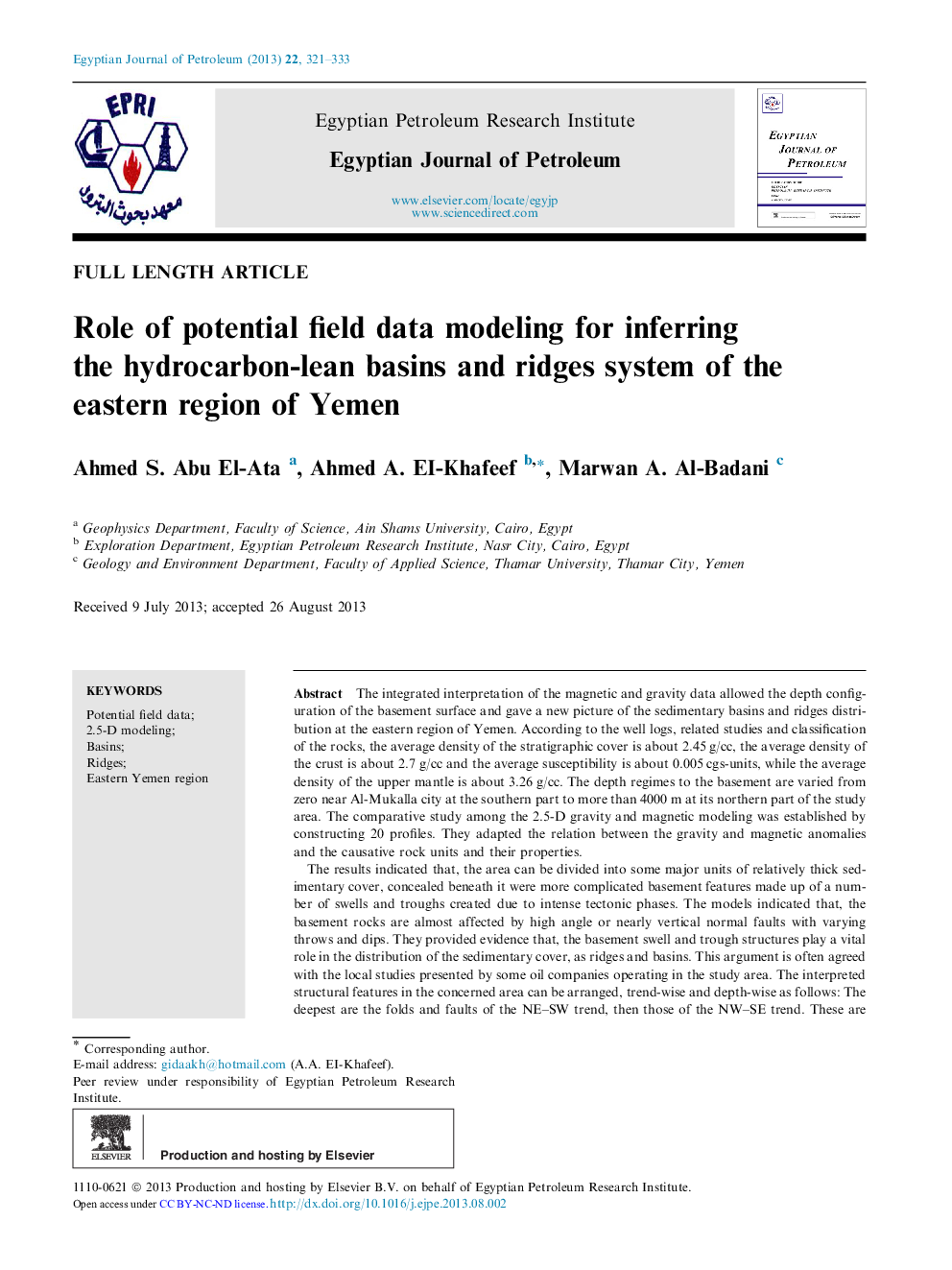| کد مقاله | کد نشریه | سال انتشار | مقاله انگلیسی | نسخه تمام متن |
|---|---|---|---|---|
| 1756830 | 1522980 | 2013 | 13 صفحه PDF | دانلود رایگان |

The integrated interpretation of the magnetic and gravity data allowed the depth configuration of the basement surface and gave a new picture of the sedimentary basins and ridges distribution at the eastern region of Yemen. According to the well logs, related studies and classification of the rocks, the average density of the stratigraphic cover is about 2.45 g/cc, the average density of the crust is about 2.7 g/cc and the average susceptibility is about 0.005 cgs-units, while the average density of the upper mantle is about 3.26 g/cc. The depth regimes to the basement are varied from zero near Al-Mukalla city at the southern part to more than 4000 m at its northern part of the study area. The comparative study among the 2.5-D gravity and magnetic modeling was established by constructing 20 profiles. They adapted the relation between the gravity and magnetic anomalies and the causative rock units and their properties.The results indicated that, the area can be divided into some major units of relatively thick sedimentary cover, concealed beneath it were more complicated basement features made up of a number of swells and troughs created due to intense tectonic phases. The models indicated that, the basement rocks are almost affected by high angle or nearly vertical normal faults with varying throws and dips. They provided evidence that, the basement swell and trough structures play a vital role in the distribution of the sedimentary cover, as ridges and basins. This argument is often agreed with the local studies presented by some oil companies operating in the study area. The interpreted structural features in the concerned area can be arranged, trend-wise and depth-wise as follows: The deepest are the folds and faults of the NE–SW trend, then those of the NW–SE trend. These are followed upwardly by the folds and faults of the E–W (ENE-–SW and WNW–ESE) trend, and then the N–S trend is the shallowest. Also, the present work revealed the probable hydrocarbon zones that occupy the reservoir of oil and gas occurrences.
Journal: Egyptian Journal of Petroleum - Volume 22, Issue 2, December 2013, Pages 321–333